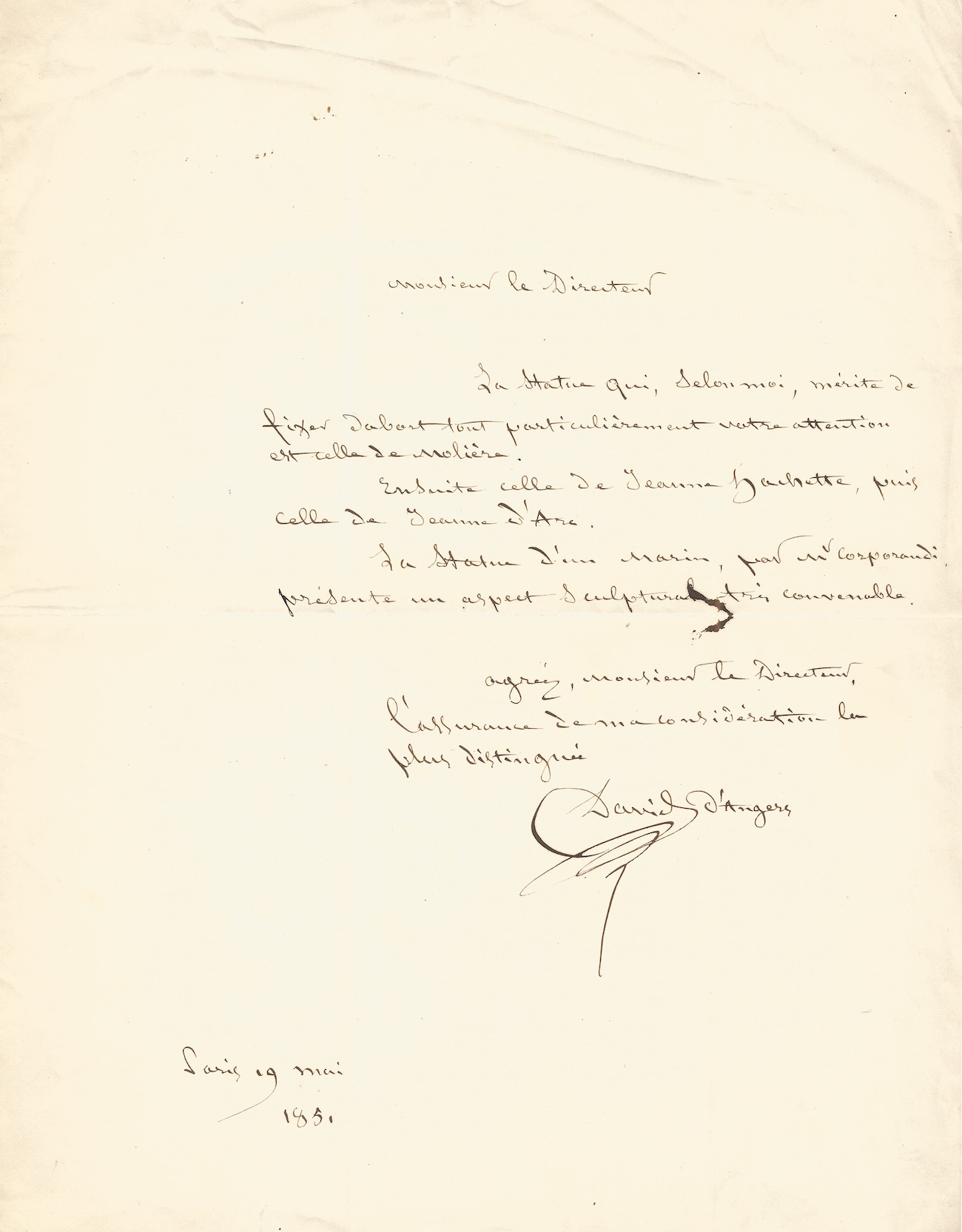Pierre-Jean DAVID D'ANGERS (1788.1856)
Signed autograph letter.
A large in-4° page. Paris May 19, 1851.
Very beautiful letter from the sculptor about the statues of Molière and Joan of Arc presented at the Salon of 1851.
“Mr. Director, The statue which, in my opinion, deserves to first attract your attention is that of Molière. Then that of Jeanne Hachette, then that of Joan of Arc. The statue of a sailor by Mr. Corporandi presents a very suitable sculptural appearance. Please accept, Sir, the Director, the assurance of my most distinguished consideration. David of Angers. »
The work of David d'Angers is considerable. There are no fewer than sixty-eight statues and statuettes, around fifty bas-reliefs, around a hundred busts, and more than five hundred medallions. Of the hundred busts, it is worth mentioning: Victor Hugo, La Fayette, Goethe, Vigny, Lamartine, Béranger, Musset, Arago, Balzac, Chateaubriand , Paganini… For the statues, he is the author of Talma (Comédie Française), Corneille (Rouen), Racine (La Ferté Milon), Gutenberg (Paris; Strasbourg)), Thomas Jefferson (Washington)…
In 1830, he received the commission for the pediment of the Pantheon which he completed in 1837, regularly defending his artistic visions, in the face of injunctions from administrative and political leaders. The inauguration took place in September 1837, without David d'Angers, uninvited. Among the monumental works, we should also mention the Arc de Triomphe in Marseille, with three bas-reliefs and various decorations (trophies, fame, etc.)
During the Revolution of 1848, he was appointed mayor of the 11th arrondissement of Paris and then elected deputy by the department of Maine et Loire. He sits on the Constituent Assembly and defends the existence of the School of Fine Arts and the French Academy in Rome. He opposes the destruction of the Expiatory Chapel and the removal of two statues from the Arc de Triomphe, ( Resistance and Peace by Antoine Etex). He also voted against the prosecution of Louis Blanc, against the credits of the Roman expedition, for the abolition of the death penalty, for the right to work, for the general amnesty. In 1851, at the accession of Napoleon III, he was arrested and sentenced to exile. He chooses Belgium then travels to Greece.

